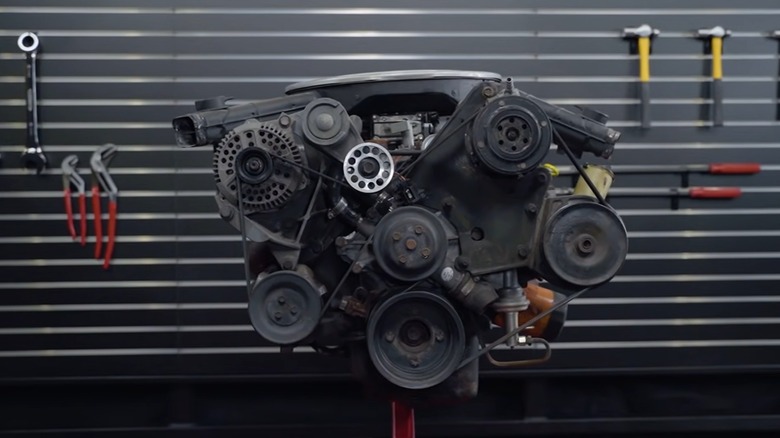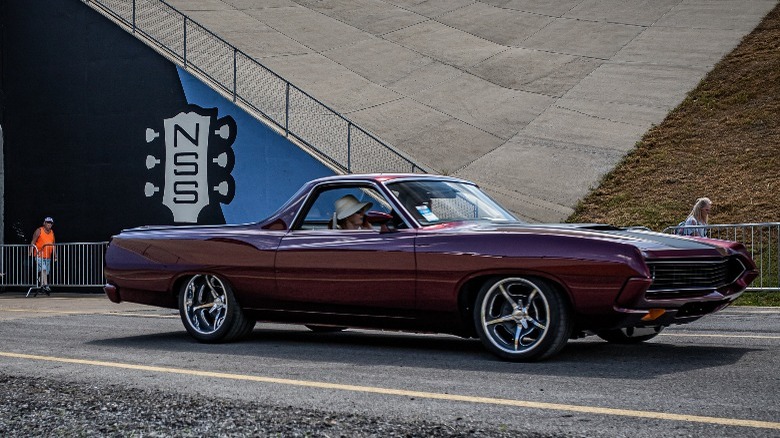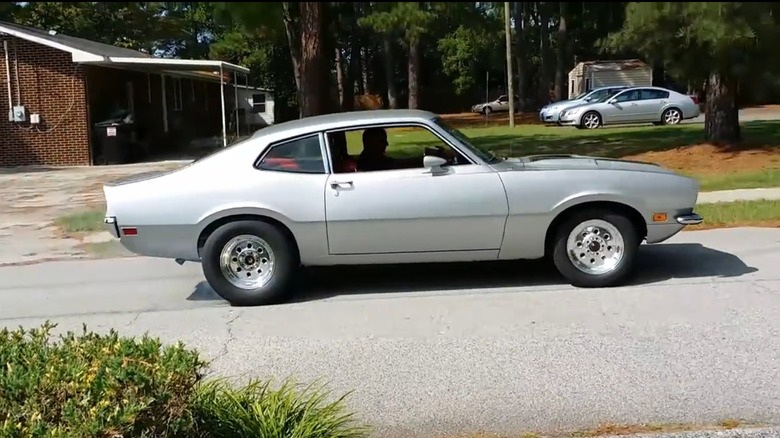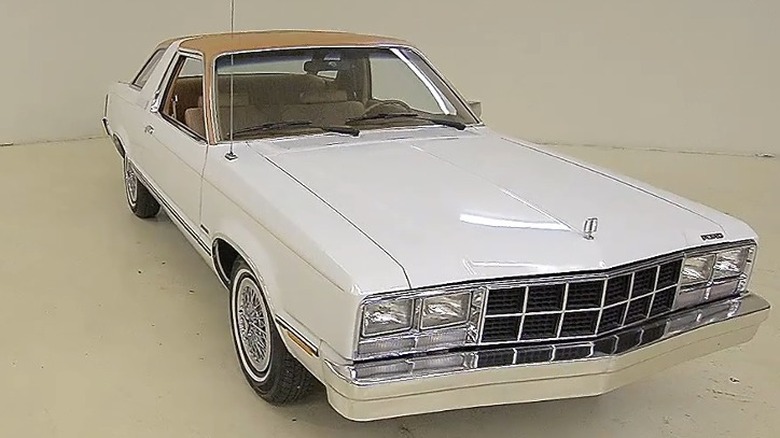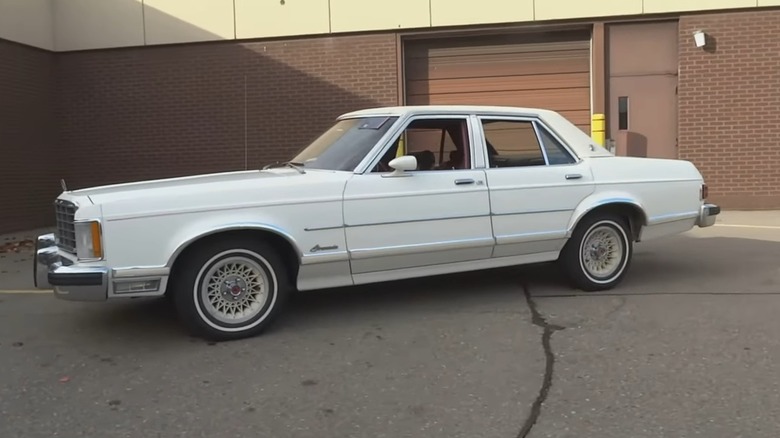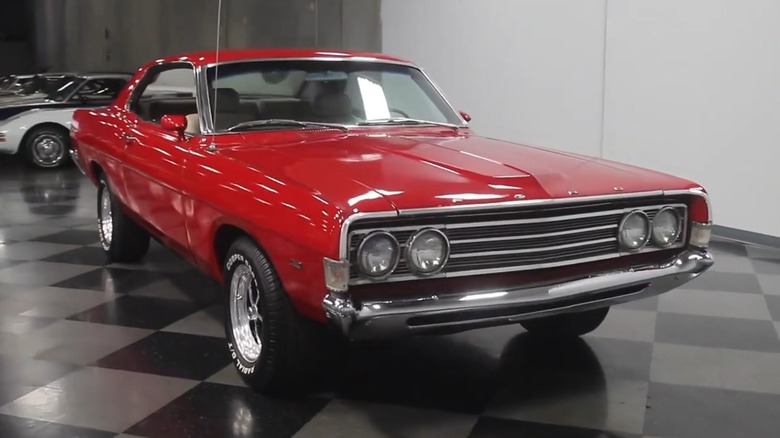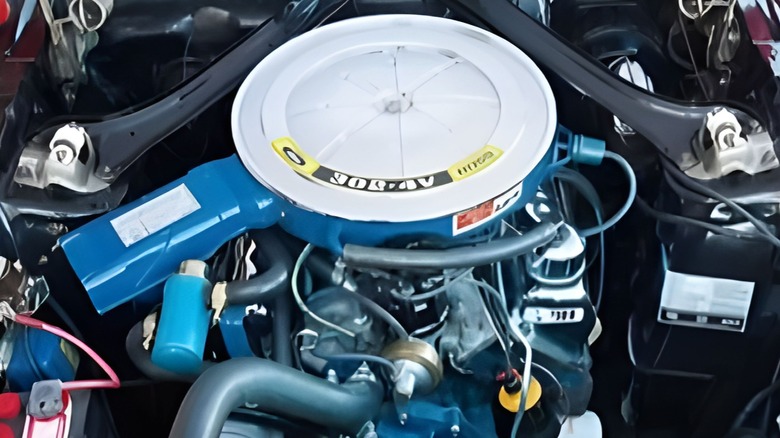5 Underrated Fords Powered By The 302 V8 Engine
The Ford small block 302 is one of the most reliable V8 engines ever built. It powered some of the Blue Oval's most famous vehicles, including the Ford Mustang, Ford Bronco, and Mercury Cougar. But the small block 302 wasn't limited to those cars, not by a long shot. In fact, you can find the 302 in many of the vehicles Ford produced throughout the second half of the 20th century and the first couple of years of the 21st century.
The small block engine was first produced in Ford's legendary Windsor, Ontario, plant. However, Ford eventually relocated the 302's manufacturing to its Cleveland, Ohio, facility, where it would remain until Ford stopped building the 302 in the year 2000. Regardless of the origin factory, all Ford 302s are referred to as 302 Windsors, unlike the engine's bigger 351 siblings.
Apart from the standard 302 models, Ford also produced a performance-oriented version of the small block called the Boss 302. Each of the 302's variants is a solid engine in its own right, and each one had many applications across Ford's vehicle lineup. When choosing vehicles for this list, we searched for models that are less well-known than Ford's most popular cars. But we'll go into more detail on our methodology later. For now, let's dive in and explore five of the most underrated Fords powered by the iconic 302 V8 engine.
Ford Ranchero (1969-1979)
When it comes to car-pickup truck combinations (officially referred to as coupe utility vehicles or Utes), the Chevrolet El Camino tends to get most of the love and recognition. However, Ford produced its own coupe utility from 1957 to 1979. For 10 of those years, the Ford Ranchero was available with the iconic small block 302.
The Ranchero was built on a modified station wagon platform and saw various changes in body style and size over its 22-year production period. Beginning with the fourth generation, the Ranchero featured a body style inspired by Ford's classic Torino model and became available with the small block 302 as an optional engine upgrade. With the 302 under the hood, the Ranchero had the power to match its muscular looks.
In 1969, a 302-powered Ranchero was capable of producing up to 230 horsepower and a staggering 300 lb-ft of torque. Those power levels would drop in the following decade thanks to the implementation of modern emissions controls. Horsepower ratings would go on to drop even further — at least in appearance — due to the widespread adoption of SAE net horsepower ratings. Despite the decrease in power, the Ranchero carved itself a spot in the history books as one of the most iconic Utes of all time and one of Ford's most underrated vehicles today.
Ford Maverick (1971-1977)
The Ford Maverick is often overshadowed by its beefy siblings, like the Mustang and Torino GT. However, with the introduction of the small block 302 to the Maverick in 1971, the compact car grew into its muscular looks and cemented a position for itself in the annals of automotive history.
Originally intended to compete with imports like Volkswagen, Toyota, and Datsun, the Ford Maverick began its life as a compact two- or four-door sedan. It featured a muscle car body and even outsold Ford's iconic Mustang in its first year of production. From 1971 onward, the Maverick was offered with the 302 V8.
Between the middle of the 1970 production year and 1976, drivers could opt for the performance-oriented Grabber package, which featured a beefier look and several upgrades, like a spoiler, custom graphics, and larger tires. At its peak, the 302-powered Maverick was capable of producing around 210 horsepower. However, with the advent of emissions control devices in the following years, the Maverick, too, saw its power levels decrease. Regardless, it became a classic for the Blue Oval, thanks in large part to its muscular looks, and it even returned to the Ford lineup in 2022 in modernized truck form.
Ford Fairmont (1978-1979)
The Ford Fairmont was created to replace the Maverick in 1978. Ford produced the car between 1978 and 1983. It was available in four body styles, and between 1978 and 1979, it was available with the small block 302.
By the time the Fairmont hit the market in 1978, the 302 had already seen its power decrease significantly. Thanks to emissions control innovations, the 302-powered Fairmont produced a humble 139 horsepower.
However, despite its lack of power, the Fairmont was largely a success. Drivers and critics alike raved about the Fairmont's attractive design and praised Ford's decision to incorporate a European-inspired MacPherson strut suspension system — a system that would go on to become immensely popular on U.S.-made vehicles. The Fairmont was also the first Ford vehicle to utilize the iconic Fox body. While most enthusiasts remember the Fox body due to the legendary Mustangs of the '80s, the Fairmont did it first and remains an important piece of automotive history.
Ford Granada (1975-1980)
People don't often think of the Granada when picturing classic Ford vehicles. But the compact luxury car deserves recognition for its interior comfort, futuristic features, and, yes, its small block 302 engine option.
Consumers could choose between the base model Granada or its more luxurious older sibling, the Granada Ghia. Both versions were available as two- or four-door sedans. The vehicle was designed to compete with the leading luxury cars of the day, specifically Mercedes, and it included many features inspired by the German brand.
The Granada featured a large, square body, accented by a chrome bumper and grille. Its interior was ahead of its time. Drivers could choose between six different color schemes, while standard features included air conditioning, a digital clock, an AM/FM radio complete with four speakers, an electric moonroof, and more. The Granada was available with the small block 302 under the hood. However, by the mid-1970s, the 302 V8 had been all but stripped of its former glory. Despite its poor power output, the Granada was a popular car that remains a shining example of Ford's innovation of the time.
Ford Fairlane (1968-1970)
The Ford Fairlane was created in homage to the company's founder. Its name comes from the road in Michigan where Henry Ford lived with his wife, Fair Lane. But the car is notable for more than just its name. Produced between 1955 and 1970, the Ford Fairlane saw seven generations and several changes throughout its production. Starting with the sixth generation and remaining until the end of its production period, the small block 302 was available under the Fairlane's hood.
With a muscular build and many new features, the sixth-gen Fairlane combined the best aspects of '60s muscle and full-size style. It was available as a convertible, hardtop, sedan, and two-door coupe. In terms of power, the Fairlane got into the 302 game just in time to make the most of the small block's potential. The 1969 302-powered Fairlane was capable of producing 210 horsepower and 295 lb-ft of torque, while the following year's model increased its power output to 220 horsepower and 310 lb-ft of torque. The 302 began decreasing in power after the 1970 model year. However, by that time, Ford had phased out the Fairlane, sparing it the steady decline in performance that its other 302 V8 vehicles faced.
Why were these vehicles chosen?
When compiling this list, we wanted to highlight Ford vehicles that many enthusiasts may overlook when discussing the Blue Oval's most iconic cars. The Ford Mustang, Mercury Cougar, Ford Bronco, and Ford F-series pickups all featured the small block 302 at one point or another. However, almost everyone knows those vehicles. Several of them are legendary in the automotive world for one reason or another. We chose to feature less well-known models in this article. Each of the vehicles covered here was not only built with the small block 302 for at least part of its production period but also represents underrated examples of Ford's engineering ingenuity and innovation during the second half of the 20th century. Whether you're a diehard gearhead or a casual Ford fan, each car featured in this list offers an interesting example of the Blue Oval's commitment to automotive excellence and unmatched style.
